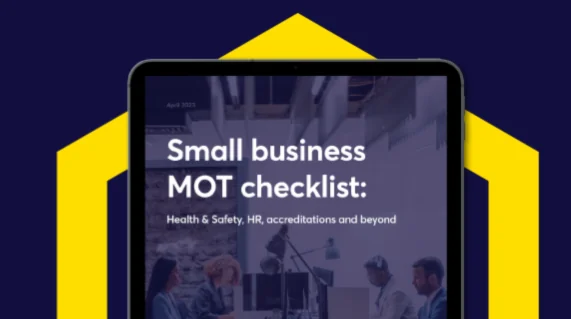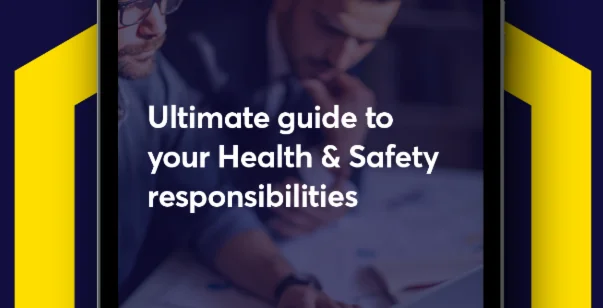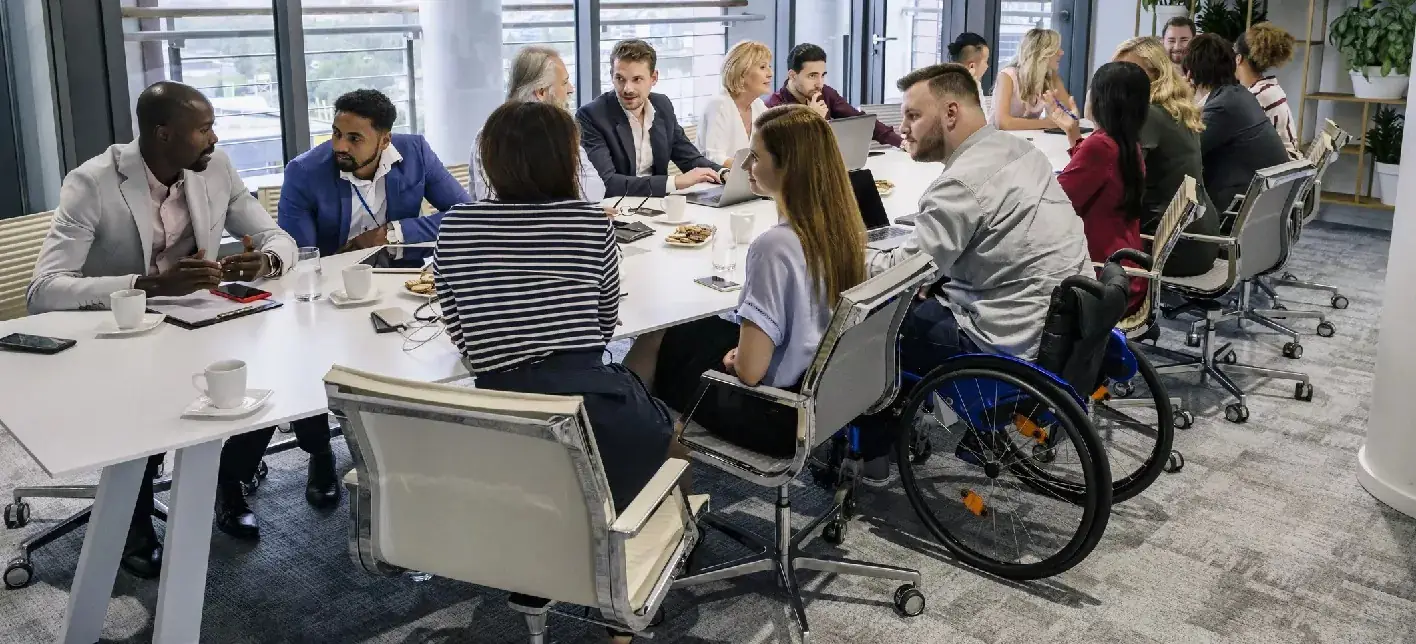In the dynamic world of construction, Health & Safety is the cornerstone of every project. Making sure workers, the public and your business are safe isn’t just a legal requirement, but it’s a moral obligation too. There are a lot of risks and hazards present in construction, but if you’ve got robust Health & Safety measures in place, these risks can be controlled, creating a safer environment for everyone involved.
In this blog we’ll go into the critical significance of Health & safety in construction, exploring how robust measures contribute to building a strong safety culture. We’ll examine key considerations, best practices, and the benefits of a proactive approach, making sure that your projects are not only successful but safe.
Why is Health & Safety in a construction environment important?
Health & Safety in the construction industry protects the workforce and any visitors to your site. It helps to build a responsible and sustainable operation, directly impacting the wellbeing of the workforce and the safety of the public. Here are some key reasons why it’s crucial:
Protecting the workforce
Workers on construction sites come into contact with a lot of hazards, like working at heights and operating heavy machinery. Implementing strict safety protocols makes sure that workers are shielded from potential dangers and are less likely to get into accidents or incidents. This includes comprehensive training or providing appropriate Personal Protective Equipment (PPE). When your team feels secure, they’re more productive and engaged.
Safeguarding the public
Construction projects often take place in busy environments where the public could be in close proximity. Due to their close proximity they may be at risk of injury from falling debris such as loose materials like bricks or tools, trips and falls from uneven surfaces, airborne hazards such as dust or fumes and noise pollution from loud machinery. That’s why it’s important to consider the safety of those outside the immediate construction site.
Proper Health & Safety measures prevent accidents that could harm bystanders or neighbouring properties. This could include using traffic management plans, putting up secure barriers, controlling dust and noise and making sure your site is cleaned up properly.
Preserving business reputation
A commitment to Health & Safety will only reflect positively on your business’s reputation. By prioritising the wellbeing of employees and adhering to safety regulations, you can increase trust with clients and stakeholders. This can lead to increased business opportunities and long-term sustainability. A strong safety record can also help reduce insurance costs, saving your business money in the long run!
Health & Safety hazards in construction
There are multiple hazards at every turn on a construction site, and many can pose serious threats to individual well-being. Some of the most common Health & Safety hazards and risks include:
- Working at height – working on scaffolds, ladders, or rooftops increases the risk of falls, which can result in severe injuries or fatalities. Visit our latest blog for more insights into the risks of working at height. Factors like unstable surfaces, lack of fall protection, and bad weather conditions can increase these risks. Using proper guardrails, safety harnesses, and regular equipment inspections are a must when working at height.
- Slips, trips, and falls – uneven surfaces, debris, or wet conditions can lead to slips, trips, and falls, causing injuries ranging from minor bruises to fractures. Injuries can range from minor bruises to severe fractures, sprains, and even concussions. Poor site cleanup, poor lighting, and obstructed pathways contribute to these incidents. Regular site cleanups, proper signage, and anti-slip flooring can help reduce the risk of these hazards.
- Operating machinery – heavy machinery such as cranes, excavators, and forklifts present risks of collisions, crush injuries, and entanglement accidents if not operated correctly. Blind spots, fatigue, and poor training increase the likelihood of accidents. You should always do regular checks, have clear communication protocols, and have designated machinery operating zones to improve safety.
- Loud noises – prolonged exposure to loud noises from equipment or machinery can lead to hearing loss, tinnitus (ringing in the ears), and other auditory problems. High noise levels can also contribute to stress and fatigue. Using noise reduction measures such as providing appropriate hearing protection (earplugs or earmuffs) can help reduce the risk of these potential injuries.
- Working with hazardous substances and materials – working with toxic chemicals, asbestos, or silica dust can lead to respiratory problems, skin irritations, and long-term health issues. Poor ventilation, improper handling, and lack of personal protective equipment (PPE) increase risks. Material Safety Data Sheets (MSDS), proper ventilation systems, and respiratory protection are helpful in reducing risk.
- Risk of mental health issues – the demanding nature of construction work, coupled with high-pressure deadlines, can contribute to stress, anxiety, and depression among workers. These mental health challenges can cause decreased productivity and increased chance of accidents. Supporting your employees is the best way to help them with these challenges. Download our FREE Mental Health Toolbox Talk for more information on how to support your employees.
Who is responsible for Health & Safety in a construction environment?
In a construction environment, Health & Safety is a collective responsibility involving several people, each playing a critical role in identifying hazards, implementing protocols, providing training, conducting inspections, and ensuring compliance with UK laws and regulations. Here’s a breakdown of the key roles and responsibilities:
- Employers: Employers hold the primary duty of care. They are responsible for creating and maintaining a safe working environment, which includes providing training, supplying PPE, and ensuring effective supervision. This also extends to conducting risk assessments and implementing control measures to reduce the risk of identified hazards.
- Employees: Workers have a responsibility to make sure they’re keeping to safety protocols, reporting hazards promptly, using the provided PPE correctly and participating in relevant training programs like our Safety Hazards Course to mitigate risks.
- Site managers and supervisors: Site managers and supervisors are crucial for the day-to-day implementation of health & safety practices. They are responsible for safety regulations, conducting regular site inspections, and ensuring that all work is carried out safely. They also play a key role in communicating safety information and addressing any safety concerns that may come up.
- Regulatory bodies: Government agencies such as the Health & Safety Executive (HSE) and regulatory bodies set standards and regulations to govern Health & Safety practices and enforce compliance through inspections and penalties when necessary.
Managing Health & Safety in construction
Effective management of Health & Safety in construction involves implementing comprehensive policies, procedures, and practices to safeguard workers and minimise risks. Key measures include:
- Risk assessments – you should conduct thorough risk assessments to identify potential hazards and implement control measures to mitigate risks – this is a legal requirement, and if you’ve got five or more employees you’ve got to have your risk assessments written down. A well-executed risk assessment process should involve:
- Identifying hazards present on the site.
- Evaluating the likelihood and severity of potential harm.
- Implementing control measures to reduce risks.
- Regularly reviewing and updating assessments to reflect changes in the work environment.
- Protective gear and equipment: Provide appropriate personal protective equipment (PPE), such as helmets, gloves, and safety harnesses, to minimise the risk of injuries. For a guide to effective PPE management on construction sites, give this blog a read!
- Training and education: Offering regular training to educate workers on safety protocols, emergency procedures, and the proper use of equipment. We offer a full range of Health & Safety e-learning courses for working at height, slips, trips and falls, first aid and more.
- Compliance with legislation: Ensuring compliance with relevant health & safety legislation and standards to avoid legal repercussions and uphold industry best practices. This could involve staying up-to-date with changes in legislation, implementing safety policies and procedures, maintaining accurate records of safety inspections and training and adopting industry best practices to always improve safety performance.
Do you need help with your Health & Safety?
Putting Health & Safety first isn’t just important for your employees, but anyone else who’s around your construction site . Putting robust risk assessments in place, providing training and knowing your legal obligations means your team, the public and your business stay safe.
Remember, effective Health & Safety management is a continuous process and requires you to take proactive measures. At HS Direct, we understand the critical role these practices play in the construction industry. That’s why we offer comprehensive Health & Safety services, designed to streamline your compliance efforts and improve your safety practices.
Our FREE Construction Health & Safety checklist is a valuable resource to help you identify potential hazards and prepare for inspections, making sure you’re always ready.
To further support your Health & Safety on site, have a look at our streamlined Health & Safety software, which simplifies documentation and management processes. Or, browse our full range of Health & Safety documentation to make sure you have the right resources to maintain compliance and promote a safe working environment.
Contact HS Direct today to learn how we can help you build a safer, more efficient construction operation!





